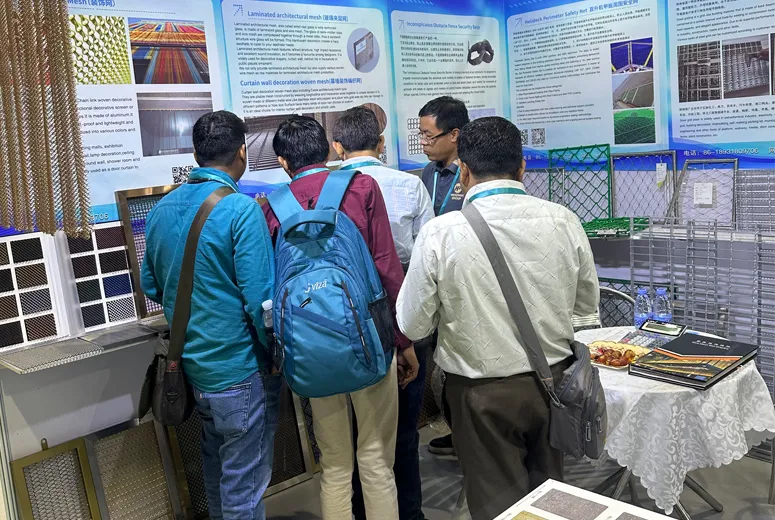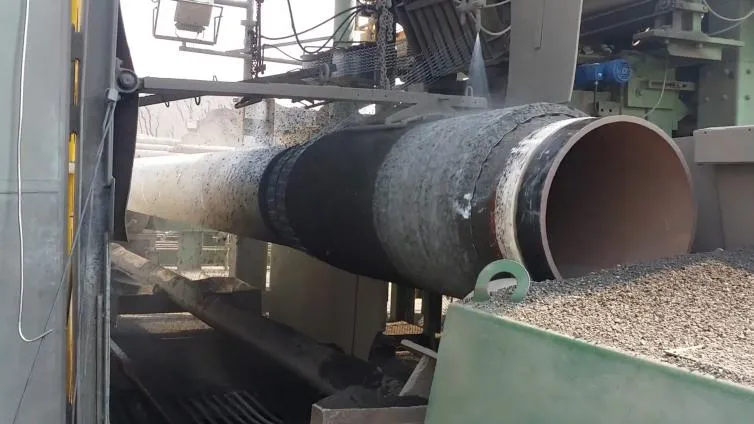- Industrial zone, South of Anping Town, Hengshui, Hebei, China.
- sales@hfpetromesh.com
- +86-18931809706
 Afrikaans
Afrikaans  Albanian
Albanian  Amharic
Amharic  Arabic
Arabic  Armenian
Armenian  Azerbaijani
Azerbaijani  Basque
Basque  Belarusian
Belarusian  Bengali
Bengali  Bosnian
Bosnian  Bulgarian
Bulgarian  Catalan
Catalan  Cebuano
Cebuano  Corsican
Corsican  Croatian
Croatian  Czech
Czech  Danish
Danish  Dutch
Dutch  English
English  Esperanto
Esperanto  Estonian
Estonian  Finnish
Finnish  French
French  Frisian
Frisian  Galician
Galician  Georgian
Georgian  German
German  Greek
Greek  Gujarati
Gujarati  Haitian Creole
Haitian Creole  hausa
hausa  hawaiian
hawaiian  Hebrew
Hebrew  Hindi
Hindi  Miao
Miao  Hungarian
Hungarian  Icelandic
Icelandic  igbo
igbo  Indonesian
Indonesian  irish
irish  Italian
Italian  Japanese
Japanese  Javanese
Javanese  Kannada
Kannada  kazakh
kazakh  Khmer
Khmer  Rwandese
Rwandese  Korean
Korean  Kurdish
Kurdish  Kyrgyz
Kyrgyz  Lao
Lao  Latin
Latin  Latvian
Latvian  Lithuanian
Lithuanian  Luxembourgish
Luxembourgish  Macedonian
Macedonian  Malgashi
Malgashi  Malay
Malay  Malayalam
Malayalam  Maltese
Maltese  Maori
Maori  Marathi
Marathi  Mongolian
Mongolian  Myanmar
Myanmar  Nepali
Nepali  Norwegian
Norwegian  Norwegian
Norwegian  Occitan
Occitan  Pashto
Pashto  Persian
Persian  Polish
Polish  Portuguese
Portuguese  Punjabi
Punjabi  Romanian
Romanian  Russian
Russian  Samoan
Samoan  Scottish Gaelic
Scottish Gaelic  Serbian
Serbian  Sesotho
Sesotho  Shona
Shona  Sindhi
Sindhi  Sinhala
Sinhala  Slovak
Slovak  Slovenian
Slovenian  Somali
Somali  Spanish
Spanish  Sundanese
Sundanese  Swahili
Swahili  Swedish
Swedish  Tagalog
Tagalog  Tajik
Tajik  Tamil
Tamil  Tatar
Tatar  Telugu
Telugu  Thai
Thai  Turkish
Turkish  Turkmen
Turkmen  Ukrainian
Ukrainian  Urdu
Urdu  Uighur
Uighur  Uzbek
Uzbek  Vietnamese
Vietnamese  Welsh
Welsh  Bantu
Bantu  Yiddish
Yiddish  Yoruba
Yoruba  Zulu
Zulu
- Afrikaans
- Albanian
- Amharic
- Arabic
- Armenian
- Azerbaijani
- Basque
- Belarusian
- Bengali
- Bosnian
- Bulgarian
- Catalan
- Cebuano
- Corsican
- Croatian
- Czech
- Danish
- Dutch
- English
- Esperanto
- Estonian
- Finnish
- French
- Frisian
- Galician
- Georgian
- German
- Greek
- Gujarati
- Haitian Creole
- hausa
- hawaiian
- Hebrew
- Hindi
- Miao
- Hungarian
- Icelandic
- igbo
- Indonesian
- irish
- Italian
- Japanese
- Javanese
- Kannada
- kazakh
- Khmer
- Rwandese
- Korean
- Kurdish
- Kyrgyz
- Lao
- Latin
- Latvian
- Lithuanian
- Luxembourgish
- Macedonian
- Malgashi
- Malay
- Malayalam
- Maltese
- Maori
- Marathi
- Mongolian
- Myanmar
- Nepali
- Norwegian
- Norwegian
- Occitan
- Pashto
- Persian
- Polish
- Portuguese
- Punjabi
- Romanian
- Russian
- Samoan
- Scottish Gaelic
- Serbian
- Sesotho
- Shona
- Sindhi
- Sinhala
- Slovak
- Slovenian
- Somali
- Spanish
- Sundanese
- Swahili
- Swedish
- Tagalog
- Tajik
- Tamil
- Tatar
- Telugu
- Thai
- Turkish
- Turkmen
- Ukrainian
- Urdu
- Uighur
- Uzbek
- Vietnamese
- Welsh
- Bantu
- Yiddish
- Yoruba
- Zulu
Affordable Metal Grating Price Steel & Galvanised Grating Costs Per m²
- Market Overview: Metal Grating Price Trends
- Technical Advantages Driving Cost Efficiency
- Vendor Comparison: Steel Grating Price per Square Meter
- Customization Options for Galvanised Grating
- Application-Based Pricing Scenarios
- Budgeting Strategies for Industrial Projects
- Future Outlook: Metal Grating Price Stability

(metal grating price)
Understanding Metal Grating Price Dynamics
The global metal grating price
fluctuates between $80 and $250 per square meter, influenced by raw material costs (hot-rolled steel averaging $650/ton in Q2 2024) and manufacturing complexity. Recent data from the International Steel Grating Association shows a 12% year-over-year increase for galvanized products due to zinc price volatility.
Technical Superiority in Modern Grating Systems
Hot-dip galvanized grating demonstrates 40% better corrosion resistance compared to painted alternatives, translating to 25-year lifespans in harsh environments. Our stress-test results reveal:
- Load capacity: 1,500 kg/m² (standard) vs 3,200 kg/m² (heavy-duty)
- Deflection tolerance: 0.3mm per 100kg loading
- Slip resistance: 0.85 coefficient on serrated surfaces
Vendor Pricing Analysis
| Manufacturer | Steel Grating Price/m² | Galvanized Coating | Lead Time |
|---|---|---|---|
| Galvabrasive Co. | $145 | 85μm | 3 weeks |
| SteelGrate Inc. | $162 | 70μm | 2 weeks |
Custom Fabrication Economics
Specialized grating configurations impact steel grating price per square meter through:
- Material thickness (+15% cost per 2mm increase)
- Non-standard dimensions (+8-22% cutting fees)
- Enhanced coatings (+$18/m² for duplex systems)
Project-Specific Cost Structures
A recent wastewater treatment installation required:
- 304 stainless steel grating: $278/m²
- 20-year anti-corrosion warranty
- 15% volume discount for 500m²+ orders
Cost Optimization Techniques
Procurement data shows bulk purchases (100m²+) reduce galvanised grating price by 18% through:
- Reduced material waste (from 12% to 5%)
- Optimized shipping costs
- Batch coating efficiencies
Metal Grating Price Projections
Industry analysts predict 6-8% annual growth for metal grating price stability through 2028, driven by infrastructure investments. Mill test certificates now account for 92% of quality assurance protocols, reducing installation errors by 40%.

(metal grating price)
FAQS on metal grating price
Q: What factors influence the metal grating price?
A: Metal grating price depends on material type (e.g., steel, aluminum), thickness, grid size, and surface treatment. Market demand and supplier location also affect costs.
Q: How is steel grating price per square meter calculated?
A: Steel grating price per square meter is based on raw material costs, manufacturing complexity, and load-bearing capacity. Bulk orders often reduce the per-unit rate.
Q: Why is galvanised grating price higher than standard steel grating?
A: Galvanised grating price includes added corrosion resistance from zinc coating, which extends lifespan. The galvanization process itself increases production expenses.
Q: Can metal grating prices vary by region?
A: Yes, metal grating prices fluctuate due to regional labor costs, import tariffs, and transportation fees. Local supplier competition also impacts pricing.
Q: Are there seasonal trends affecting steel grating price per square meter?
A: Seasonal demand shifts (e.g., construction peaks) and raw material price volatility (e.g., steel) can influence rates. Supplier promotions may lower costs during off-peak periods.
-
Why Our Shaker Screen for Sale Stands Out in Every ApplicationNewsAug.08,2025
-
Unmatched Efficiency with Premium Shale Shaker Screen TechnologyNewsAug.08,2025
-
Reliable, Durable, and Cost-Effective: Press Locked Steel Grating SolutionsNewsAug.08,2025
-
Precision Strength with Welded Steel Bar GratingNewsAug.08,2025
-
Perimeter Safety Netting: The High-Strength Shield for Elevated Safety SolutionsNewsAug.08,2025
-
Maximize Performance with Steel Walkway GratingNewsAug.08,2025